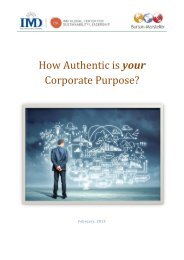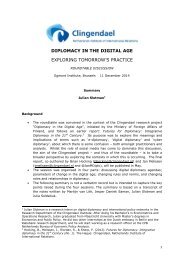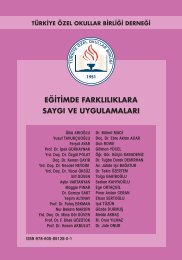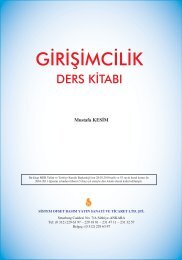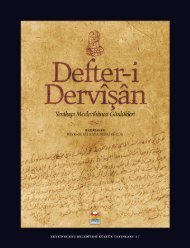SWEDEN%20policy%20profile%20-%20published%2005-02-2013
SWEDEN%20policy%20profile%20-%20published%2005-02-2013
SWEDEN%20policy%20profile%20-%20published%2005-02-2013
Create successful ePaper yourself
Turn your PDF publications into a flip-book with our unique Google optimized e-Paper software.
ANNEX. DEFINITIONS AND METHODOLOGY<br />
QUALITY MATTERS IN EARLY CHILDHOOD EDUCATION AND CARE: SWEDEN © OECD <strong>2013</strong><br />
ANNEX. DEFINITIONS AND METHODOLOGY - 59<br />
A curriculum framework (guidelines or standards) is a tool which can guide the content<br />
of and approach to children’s care and learning.<br />
Curriculum contents can be organised into subject elements or areas. ECEC elements or<br />
subject areas highlight priorities and clarify how care, pedagogies and teachings are<br />
organised. In the OECD Network on ECEC’s “Survey for the Quality Toolbox and ECEC<br />
Portal” (2011), countries were asked to choose from a list of nine ECEC elements or subject<br />
areas:<br />
1) Literacy: refers to all subjects related to reading and writing, including language<br />
learning and development, and word recognition.<br />
2) Numeracy: refers to all subjects related to numbering and counting, including<br />
calculations, number recognition, spaces and shapes.<br />
3) Science: refers to all scientific subjects, such as geography and natural science.<br />
4) Arts: refers to all subjects related to some form of art, including drawing,<br />
colouring, painting and handicrafts.<br />
5) Music: refers to all subjects involving music, such as singing, playing musical<br />
instruments and dancing to music.<br />
6) Physical education: refers to all instructed subjects that require physical effort<br />
or are related to physical well-being, such as gymnastics, sports and classes<br />
about food or hygiene.<br />
7) Practical skills: refers to all practices related to practical skills not mentioned in<br />
one of the other subjects (e.g., tying shoe-laces).<br />
8) Playtime: refers to the time children can play freely, i.e., child-initiated play: the<br />
time that a child can decide for him- or herself what he/she wants to do and play<br />
with (inside or outside).<br />
9) Activities outside ECEC institutions (external activities): refers to field trips,<br />
such as outings to museums, public parks, libraries, concerts, and art and<br />
science centres.<br />
There were an additional seven subject areas identified by countries/regions, including<br />
religion, ethics and democratic citizenship; health, personal and/or social well-being; social<br />
sciences and/or inter-cultural education; ICT; languages (foreign); and learning approaches.<br />
The findings presented here are based on data from the OECD Network on ECEC’s “Survey<br />
for the Quality Toolbox and ECEC Portal” (2011). For each graph and table, the countries or<br />
regions for which data is used are listed.



